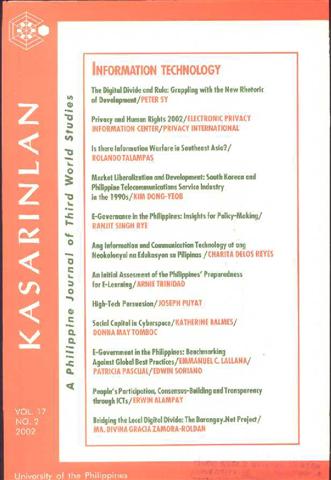High Tech Persuasion
Abstract
Why do people forward e-mail chain letters mindlessly? By investigating the socio-psychological underpinnings of the behavior, this paper elucidates the strategy of those who yearn to manipulate people’s minds. The human brain cannot store an unlimited amount of information but such capacity for production and accumulation do not necessarily entail the conscious processing of messages it receives. This characteristic of the human mind serves as the gateway for the notoriety of chain e-mails. Chain e-mails come in various designs but exhibit similar form. They usually contain the following elements: ‘copy quota’ or the deadline for the task of replication; ‘testimonials’ regarding success and unfortunate stories; ‘waiting time’ for the promised benefits and threats; and the ‘circumnavigation note’ or the length of the letters’ circulation. The phenomenon can be understood through the principles of systematic and heuristic modes of processing information. People may heed information either at a superficial level (heuristic) or a more cognitive, analytical manner (systematic). Recipients can often react to chain e-mails heuristically. Authors of chain letters and mobile texts induce specific emotions such as fear, anger, and disgust to compel their targets to tag along with the “forward message” bandwagon. This reinforces the “you’ve got nothing to lose anyway” attitude among email readers which can wreak serious havoc on persons and properties. Ultimately, preserving a state of mindfulness is still the best defense against these scheming Web messages.
How to Cite
PUYAT, Joseph.
High Tech Persuasion.
Kasarinlan: Philippine Journal of Third World Studies, [S.l.], v. 17, n. 2, oct. 2007.
ISSN 2012-080X.
Available at: <https://journals.upd.edu.ph/index.php/kasarinlan/article/view/1660>. Date accessed: 24 sep. 2025.
Section
Features
By submitting a manuscript, the authors agree that the exclusive rights to reproduce and distribute the article have been given to the Third World Studies Center.



